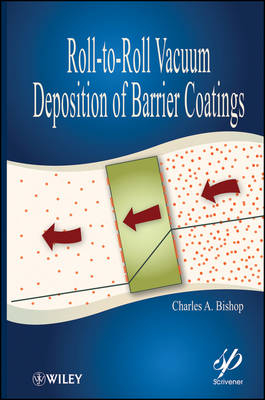
Roll-to-Roll Vacuum Deposition of Barrier Coatings
John Wiley & Sons Ltd (Verlag)
978-0-470-60956-9 (ISBN)
- Titel erscheint in neuer Auflage
- Artikel merken
Roll-to-Roll Vacuum Deposition of Barrier Coatings: * Specifies the benefits and problems of producing vacuum deposited barrier coatings * Explains why products designed by system operators might vary and how they can improve the quality and reproducibility of their products * Describes the basic deposition process, limitations that may arise, and how they may be overcome * Details why current barrier materials have limited performance and why it is so difficult and expensive to make improvements or to produce ultra barrier materials. This practical reference is invaluable to all readers using the roll-to-roll vacuum coating technology, including R&D scientists and engineers (process; product and process design), operators, technicians, line managers involved in producing vacuum deposited barrier coatings. It also serves the food packaging and medical packaging industries, along with any industry using Organic Light Emitting Devices (OLEDs) such as electronics, solar energy and photovoltaics (PVs), thin film battery as well as vacuum insulation panels.
Charles Bishop left school at 16 to start an engineering apprenticeship completing it as a Toolmaker. Opting to return to education, he received a degree in Materials Technology. Moving to the Physics Department, he went on to complete Masters and Doctorate degrees on different aspects of vacuum deposition. After a brief time as a post doctoral researcher, Dr. Bishop moved into industry for the next 15 years before setting up his own consultancy business in 1998. Dr. Bishop is the author of 'Vacuum deposition onto webs, films and foils' and author or co-author of over 60 papers and 5 patents. He jointly runs a vacuum training website (www.VacuumCoatingTraining.com) and edits the blog www.vacuumcoatingblog.com on behalf of AIMCAL. In 2008, Dr. Bishop was presented with the Society of Vacuum Coaters Mentor Award.
Preface. Acknowledgements. 1 Introduction. 1.1 Packaging. 1.1.1 Opaque Barrier. 1.1.2 Transparent Barrier. 1.2 Markets. References. 2 Terminology. 2.1 Permeability Models. 2.2 Barrier Improvement Factor. 2.3 Tortuous Path Model. 2.4 Terminology Summary. References. 3 Measurements. 3.1 Permeation Measurements. 3.2 Durability Testing. 3.3 Adhesion. 3.4 Pinholes. 3.5 Surface Energy. 3.6 Coefficient of Friction. 3.7 Coating Thickness. 3.8 Coating Conductivity or Resistivity. 3.9 Transmittance, Reflectance and Ellipseometry. 3.10 Standard Test Methods. 3.10.1 Permeability Tests. 3.10.2 Other Mechanical or Optical Performance Tests. References. 4 Materials. 4.1 Packaging Materials Calculations. References. 5 Substrates, Surfaces, Quality and Defects. 5.1 Substrates. 5.1.1 Oligomers. 5.1.2 Additives. 5.1.3 Contamination. 5.1.4 Surface Quality. 5.2 Substrate Cleaning. 5.3 Substrate Plasma Treatments. 5.4 Wetting and Adhesion. 5.5 Subbing or Planarisation Layers and Over-coatings. References. 6 Vacuum Deposition Processing. 6.1 Nucleation, Growth and Modification. 6.2 Managing Heat Load. 6.3 Web Winding in Vacuum. 6.4 Troubleshooting. References. 7 Vacuum deposition. 7.1 Physical Vapour Deposition (PVD). 7.1.1 Resistance Heated Evaporation. 7.2 Plasma Enhanced Chemical Vapour Deposition (PECVD). 7.3 Electron Beam Evaporation Sources. 7.4 Induction Heated Evaporation Source. 7.5 Magnetron Sputter Deposition Sources. 7.6 Atomic Layer Deposition. 7.7 Other Deposition. References. 8 Summary. 8.1 Cleanliness. 8.2 Substrates. 8.3 Coatings. 8.4 Over Coatings. 8.5 Multilayers. 8.6 Conclusion. Index. Author Biography.
| Erscheint lt. Verlag | 16.7.2010 |
|---|---|
| Reihe/Serie | Wiley-Scrivener |
| Verlagsort | Chichester |
| Sprache | englisch |
| Maße | 168 x 237 mm |
| Gewicht | 532 g |
| Themenwelt | Technik ► Maschinenbau |
| ISBN-10 | 0-470-60956-7 / 0470609567 |
| ISBN-13 | 978-0-470-60956-9 / 9780470609569 |
| Zustand | Neuware |
| Haben Sie eine Frage zum Produkt? |
aus dem Bereich



